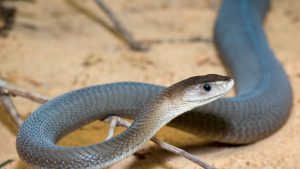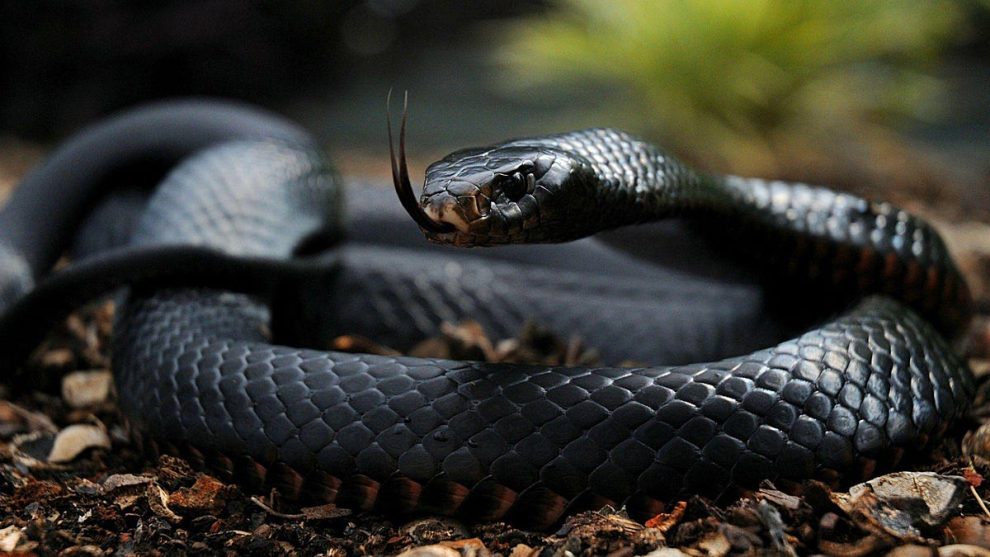The black mamba (Dendroaspis polylepis) is one of the most feared and deadly snakes in the world. This venomous serpent, native to sub-Saharan Africa, captivates both snake enthusiasts and those who fear its potent venom. In this blog, we will delve into the intriguing world of the black mamba, exploring its physical characteristics, habitat, behavior, and the significance of its reputation.
The black mamba gets its name from the dark coloration inside its mouth, rather than the color of its scales. In fact, its body coloration can vary from olive to gray or brown. It is a large and slender snake that can reach lengths of up to 14 feet (4.3 meters), making it one of the longest venomous snakes in the world. Its sleek and agile body allows it to move swiftly across the ground and climb trees with ease.
These snakes are primarily found in savannas, rocky hillsides, and open woodlands of sub-Saharan Africa. They prefer warm and dry habitats, where they can bask in the sun to regulate their body temperature. Black mambas are highly adaptable and can thrive in a variety of environments, including agricultural areas and human settlements.
Black mambas are known for their speed and agility. They are incredibly fast, capable of slithering at speeds of up to 12 miles per hour (20 kilometers per hour). Their quick strikes and rapid movements make them formidable predators and elusive targets for their prey. Despite their size, black mambas are shy and generally avoid confrontation with humans. However, when threatened or cornered, they can display aggressive behavior and deliver multiple, lethal bites.
The venom of the black mamba is highly toxic and potentially lethal. It contains a potent mix of neurotoxins and cardiotoxins that target the nervous system and cardiovascular system, respectively. When injected into its prey or a potential threat, the venom quickly immobilizes and kills the victim. Without prompt medical attention, a black mamba bite can be fatal to humans as well.
Contrary to its aggressive reputation, black mambas prefer to avoid confrontation and will typically flee when they sense danger. They use their incredible speed and agility to escape rather than engaging in unnecessary conflicts. However, if cornered or threatened, they can adopt a defensive posture, raising their heads and displaying their open-mouthed, dark interior.
Black mambas are solitary creatures, except during the mating season. They are oviparous, meaning they lay eggs to reproduce. Female black mambas will lay a clutch of 10 to 25 eggs, which they carefully guard until they hatch. The young snakes are independent from the moment they emerge from their eggs.
Despite their fearsome reputation, black mambas play an important ecological role as top predators. They help control rodent populations, which can be a nuisance in agricultural areas. They also serve as prey for other predators, such as birds of prey and large mammals.
Conservation efforts are crucial to protect black mamba populations and their habitats. Habitat destruction, illegal collection for the pet trade, and persecution due to fear often pose significant threats to their survival. Educating local communities and raising awareness about the importance of these snakes in the ecosystem can help dispel myths and promote their conservation.
In conclusion, the black mamba is a captivating and enigmatic snake that commands respect and intrigue. Its impressive speed, deadly venom, and adaptable nature have solidified its reputation as one of the most feared snakes in the world. However, understanding its behavior, habitat, and ecological significance is essential to appreciate its role in the natural world. By promoting conservation efforts and fostering coexistence, we can ensure the survival of this remarkable species while appreciating the beauty and complexity of the animal kingdom.



















Add Comment